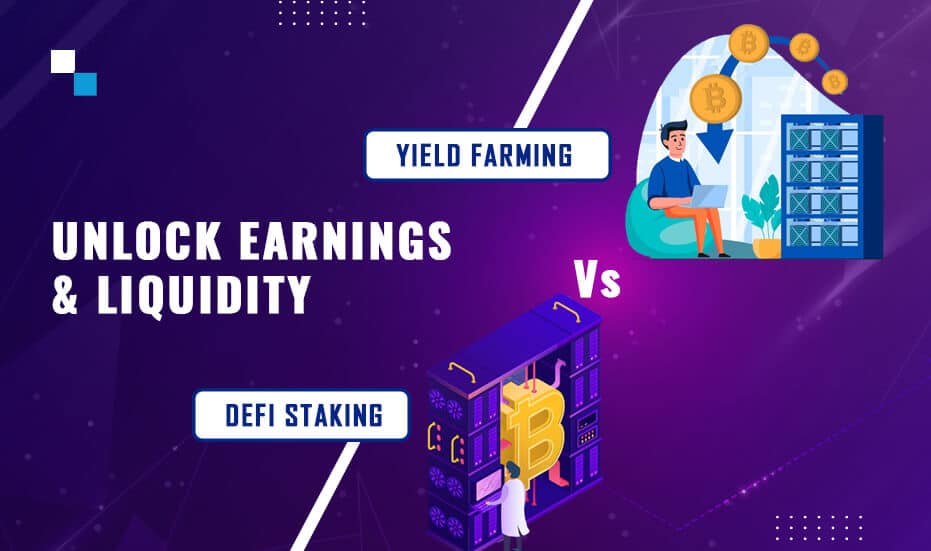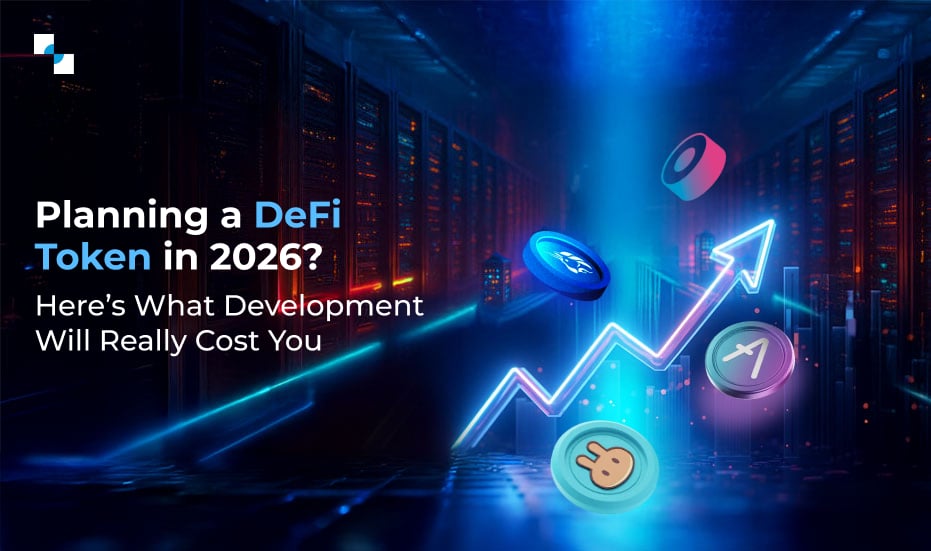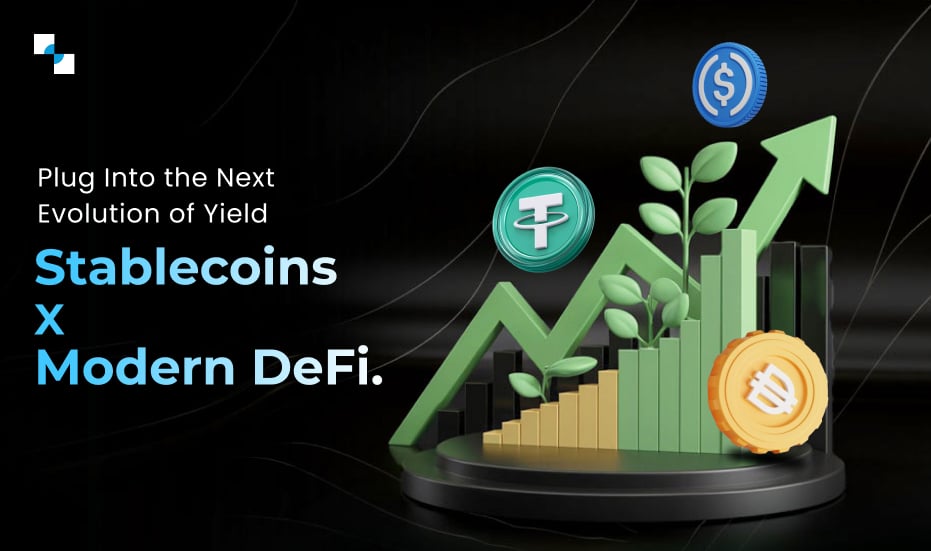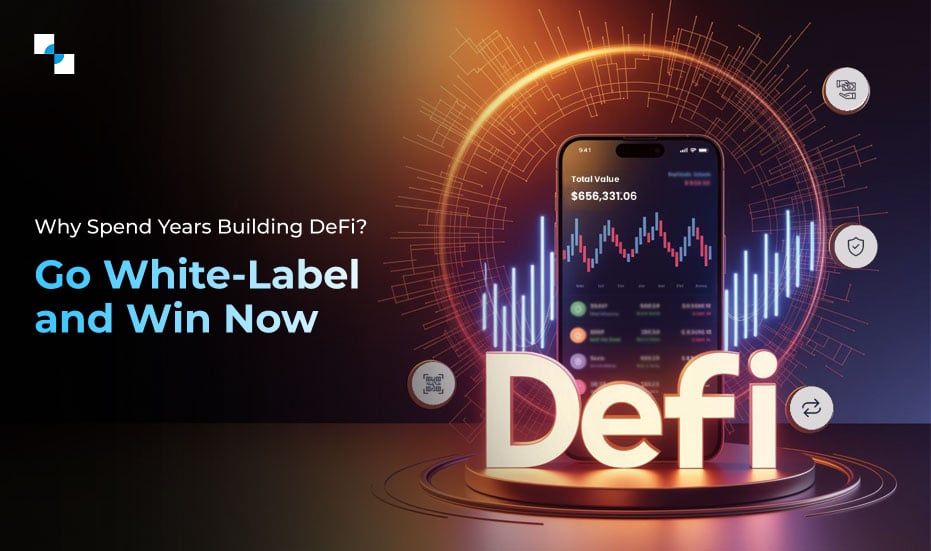Decentralized Finance (DeFi) has revolutionized the financial landscape by providing individuals with unprecedented access to a range of financial services. Two prominent mechanisms within the DeFi ecosystem are staking and yield farming.
As of May 6, 2023, the cumulative TVL across all DeFi platforms is $49.31 billion.
Staking involves holding and locking up a particular cryptocurrency in a wallet or smart contract to support the operations of a blockchain network. In return, stakers receive rewards, typically in the form of additional tokens. On the other hand, yield farming refers to the practice of providing liquidity to decentralized platforms or protocols, often through lending or liquidity pools. By supplying funds, users earn additional tokens as rewards.
Let’s explore the development of the DeFi staking platform and yield farming platform, highlighting their key differences, benefits, and challenges. It’s necessary to have a deep understanding of the nuances of each approach, so investors and developers can make informed decisions and participate in the rapidly evolving world of decentralized finance.

DeFi Staking Platform Development
A DeFi staking platform enables users to lock their digital assets in a smart contract and participate in network consensus protocols. Stakers are rewarded with additional tokens or fees for providing liquidity and securing the network. Here are some important aspects of DeFi staking platform development:
1. Token Economics
Developing a staking platform requires a robust token economy. The platform should have a native token that holds utility within the ecosystem, encouraging users to stake and participate actively. Careful consideration should be given to factors like inflation rate, token distribution mechanisms, and tokenomics design to ensure a healthy and sustainable ecosystem.
2. Security and Auditing
Security is of utmost importance in DeFi staking platforms. Developers must implement robust smart contract architecture, conduct thorough security audits, and implement best practices to mitigate the risk of vulnerabilities and potential attacks. Third-party audits by reputable firms can provide additional validation and instill trust among users.
3.Governance and Voting
Staking platforms often incorporate governance mechanisms that allow token holders to participate in decision-making processes. Developers need to implement a robust voting system, ensuring that token holders have a fair say in protocol upgrades, parameter changes, and other key decisions that affect the platform’s functionality.
4. User Experience
A seamless and intuitive user experience is crucial for the success of a staking platform. Developers should focus on creating user-friendly interfaces, providing clear instructions for staking and unstaking, and offering real-time monitoring tools to track rewards and participation in the network consensus.
Yield Farming Platform Development
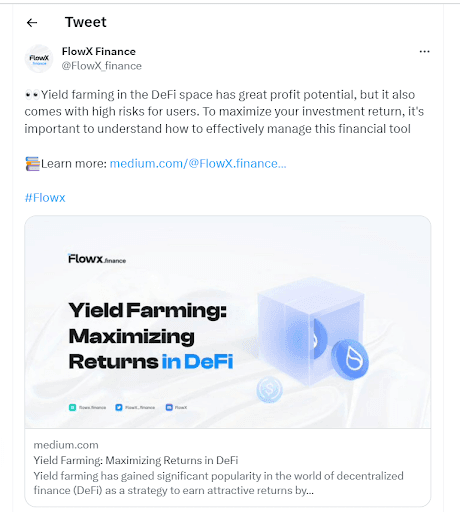
Yield farming platforms, also known as liquidity mining platforms, involve users providing liquidity to decentralized exchanges (DEXs) or lending protocols and earning rewards in return. Here are key considerations for yield farming platform development:
1. Liquidity Pools and Strategies
Yield farming platforms require the creation of liquidity pools, where users can deposit their assets. Developers need to determine which tokens will be included in the pools, set appropriate deposit and withdrawal fees, and design strategies to maximize returns and minimize impermanent loss.
2. Smart Contract Integration
Developers should integrate with existing DeFi protocols and DEXs to access liquidity and enable seamless interactions. Smart contracts should be carefully audited to ensure security and reliability. Moreover, developers may need to consider inter-chain compatibility to access a wider range of assets and networks.
3. Incentive Mechanisms
To attract liquidity providers, yield farming platforms implement incentive mechanisms such as yield distribution and token rewards. Designing a balanced and sustainable reward distribution model is crucial to prevent market manipulation and maintain user engagement.
4. Risk Management
Yield farming platforms are exposed to various risks, including smart contract vulnerabilities, market volatility, and impermanent loss. Developers should implement risk management strategies, such as insurance options, hedging mechanisms, or diversification strategies, to protect users and ensure the long-term viability of the platform.
Joint Benefits of DeFi Staking & Yield Farming
DeFi staking and yield farming are two popular strategies within the decentralized finance ecosystem that offer unique benefits to users. While they have distinct characteristics, there are also joint benefits that can be achieved by combining these approaches. Let’s explore the joint benefits of DeFi staking platform and yield farming platform development for crypto investors:
1. Enhanced Yield Generation
By combining staking and yield farming, users can maximize their yield generation potential. Staking provides a reliable source of passive income through token rewards for participating in the network consensus, while yield farming allows users to earn additional rewards by providing liquidity to decentralized exchanges (DEXs) or lending protocols. This combined strategy can result in higher overall returns on investment compared to using either approach individually.
2. Diversification of Income Streams
Engaging in both DeFi staking and yield farming allows users to diversify their income streams. Instead of relying solely on staking rewards or yield farming returns, individuals can generate income from multiple sources within the decentralized finance ecosystem. This diversification helps mitigate risks associated with any single investment strategy and provides a more balanced and stable income profile.
3. Token Exposure and Asset Accumulation
Participating in yield farming often requires providing liquidity using specific tokens. This exposes users to various digital assets and allows them to accumulate a diversified portfolio. By staking these acquired tokens, users can earn additional rewards and further increase their asset accumulation over time. This joint approach enables individuals to leverage their holdings and potentially benefit from the appreciation of multiple tokens simultaneously.
4. Community Engagement and Governance Influence
Both the DeFi staking platform and yield farming platform development often involve active participation within decentralized finance communities. By engaging in both strategies, users can become more involved in the governance and decision-making processes of the projects or platforms they support. This increased engagement provides an opportunity to shape the direction of the ecosystem, contribute to protocol improvements, and influence the distribution of rewards and incentives.
5. Flexibility and Liquidity Management
Combining staking and yield farming offers greater flexibility in managing liquidity. While staked tokens are typically locked in a specific period, yield farming allows users to allocate their assets to different liquidity pools and withdraw them as needed. This flexibility provides liquidity options for users to seize investment opportunities, adapt to market conditions, or respond to changing personal circumstances.
6. Exposure to New Projects and Opportunities
Both DeFi staking and yield farming attract innovative projects and emerging tokens. By participating in both strategies, users can gain early access to new projects, experiment with different tokens, and potentially discover promising opportunities. This exposure to a diverse range of projects within the decentralized finance ecosystem can lead to valuable investment experiences and potentially higher returns.
7. Learning and Skill Development
Engaging in both DeFi staking and yield farming platform development provides an opportunity for users to deepen their understanding of decentralized finance, blockchain technology, and investment strategies. By actively participating in these strategies, individuals can gain practical knowledge, stay updated with the latest trends and developments, and enhance their skills in managing decentralized financial assets.
It’s important to note that combining DeFi staking platform and yield farming involves various risks, such as smart contract vulnerabilities, impermanent loss, and market volatility. Users should conduct thorough research, consider their risk tolerance, and choose reliable platforms with a strong track record. Additionally, it’s crucial to carefully manage and monitor the investments to ensure optimal results and minimize potential risks.
Develop your own Defi Yield Farming Platform
Schedule Free DemoConclusion
Both DeFi staking platforms and yield farming platforms offer unique opportunities for users to earn passive income and participate in the decentralized finance ecosystem. A DeFi staking platform provides passive income, network security, and token holder engagement, while yield farming platform development will focus on offering liquidity provision and the potential for high returns. While they have distinct characteristics, the joint benefits of combining these strategies include enhanced yield generation, diversification of income streams, token exposure, community engagement, flexibility in liquidity management, exposure to new projects, and opportunities for learning and skill development.
Want to develop such a platform that can help in fetching the best outputs? It’s important f to carefully consider the goals, risk tolerance, and market conditions when choosing between these strategies or exploring the combined approach to maximize their potential in the evolving world of decentralized finance. Antier can help make your dream come true by offering the best technical support. Contact us anytime, we are ever ready to help.


